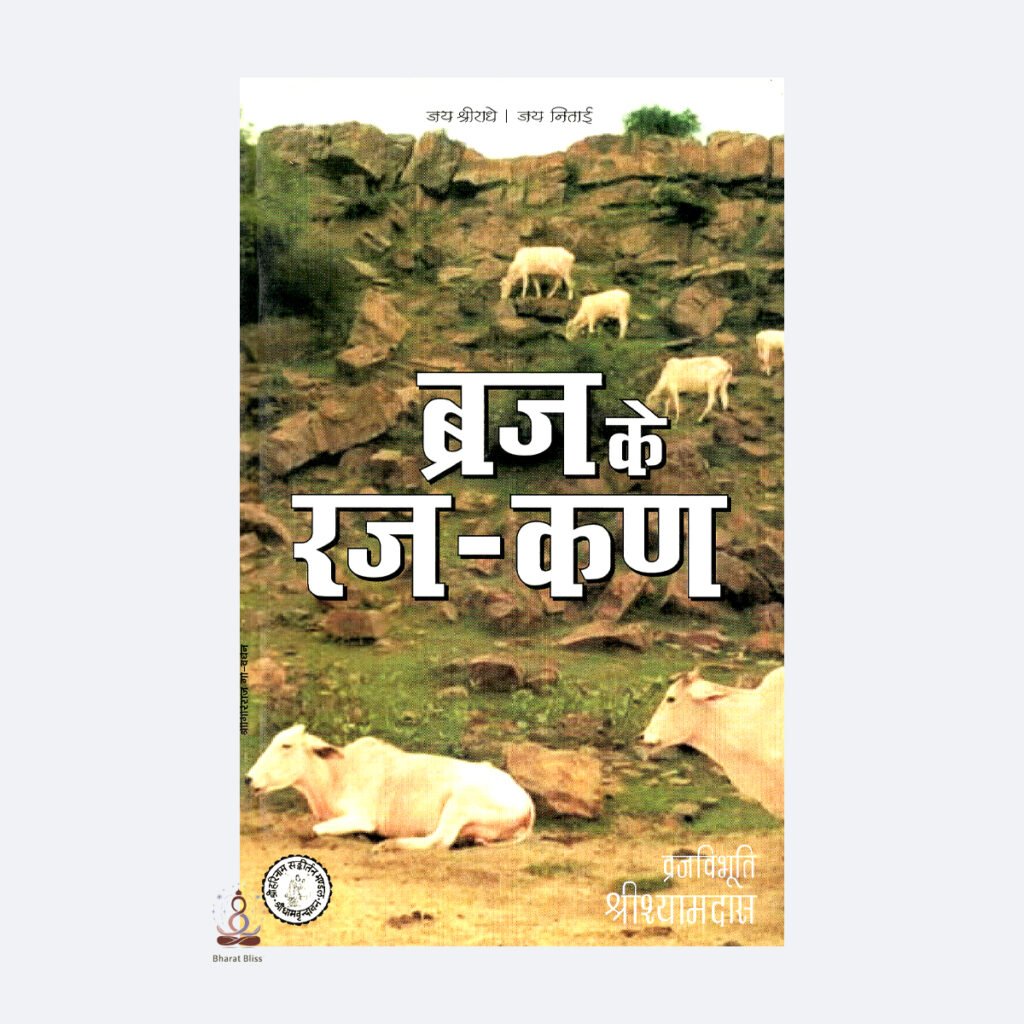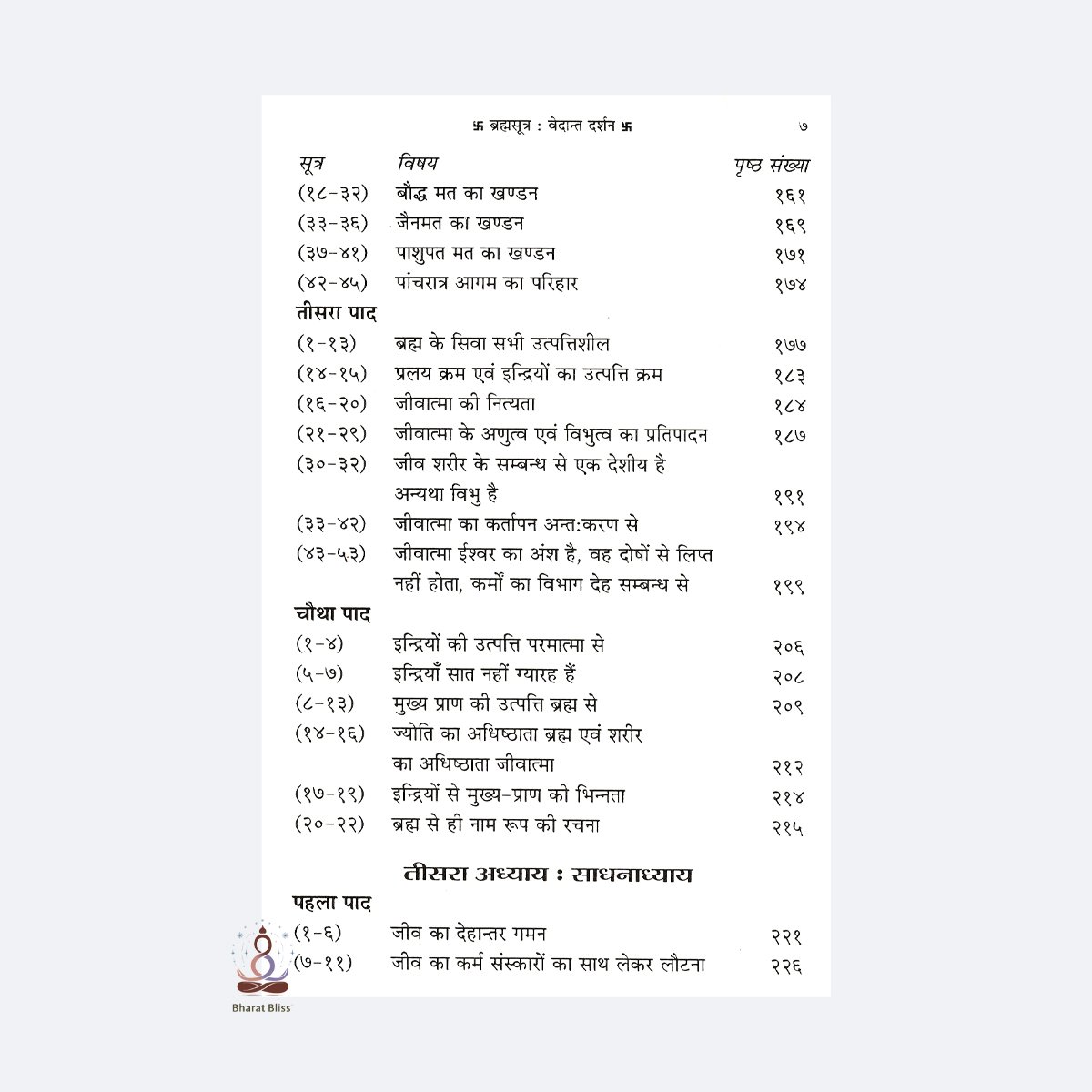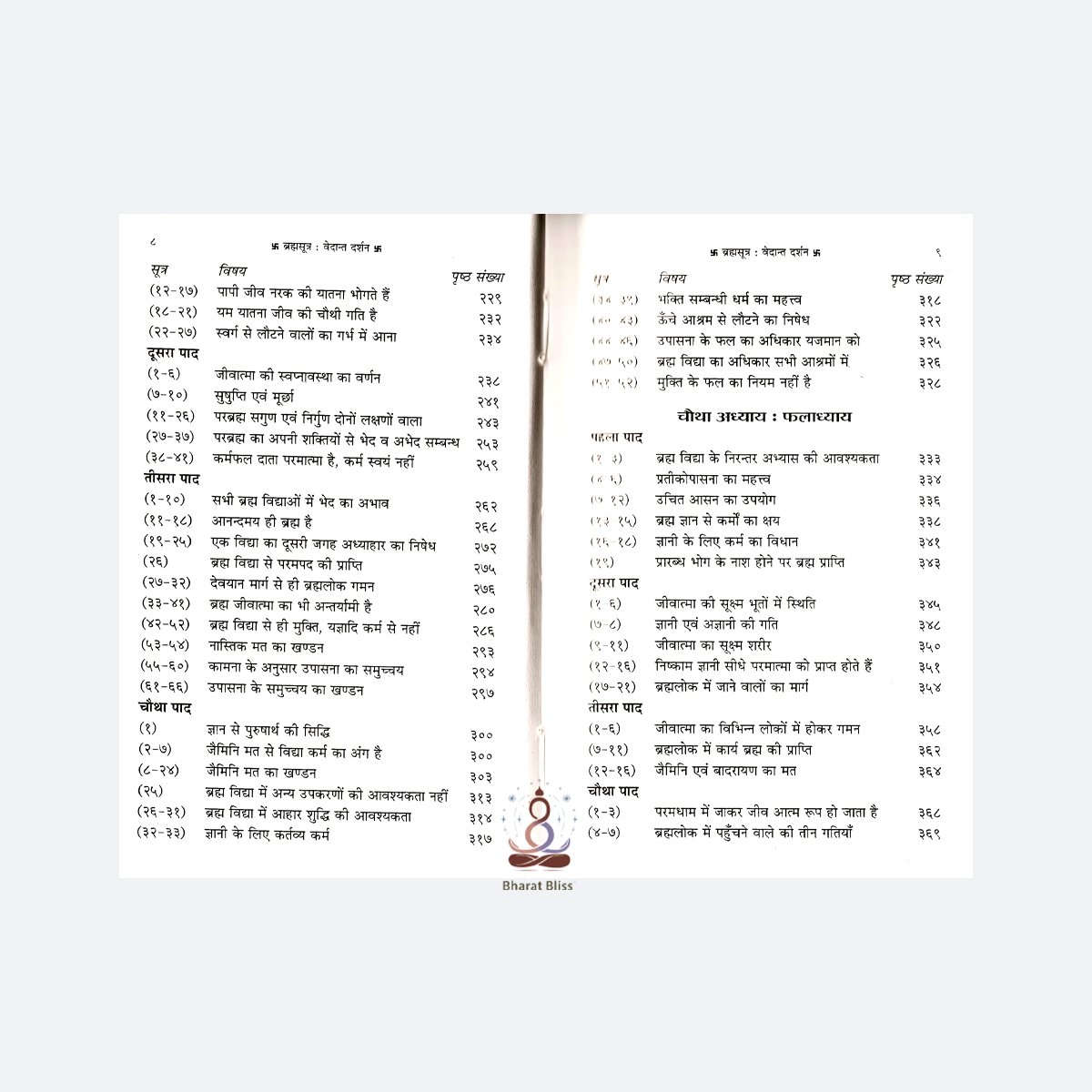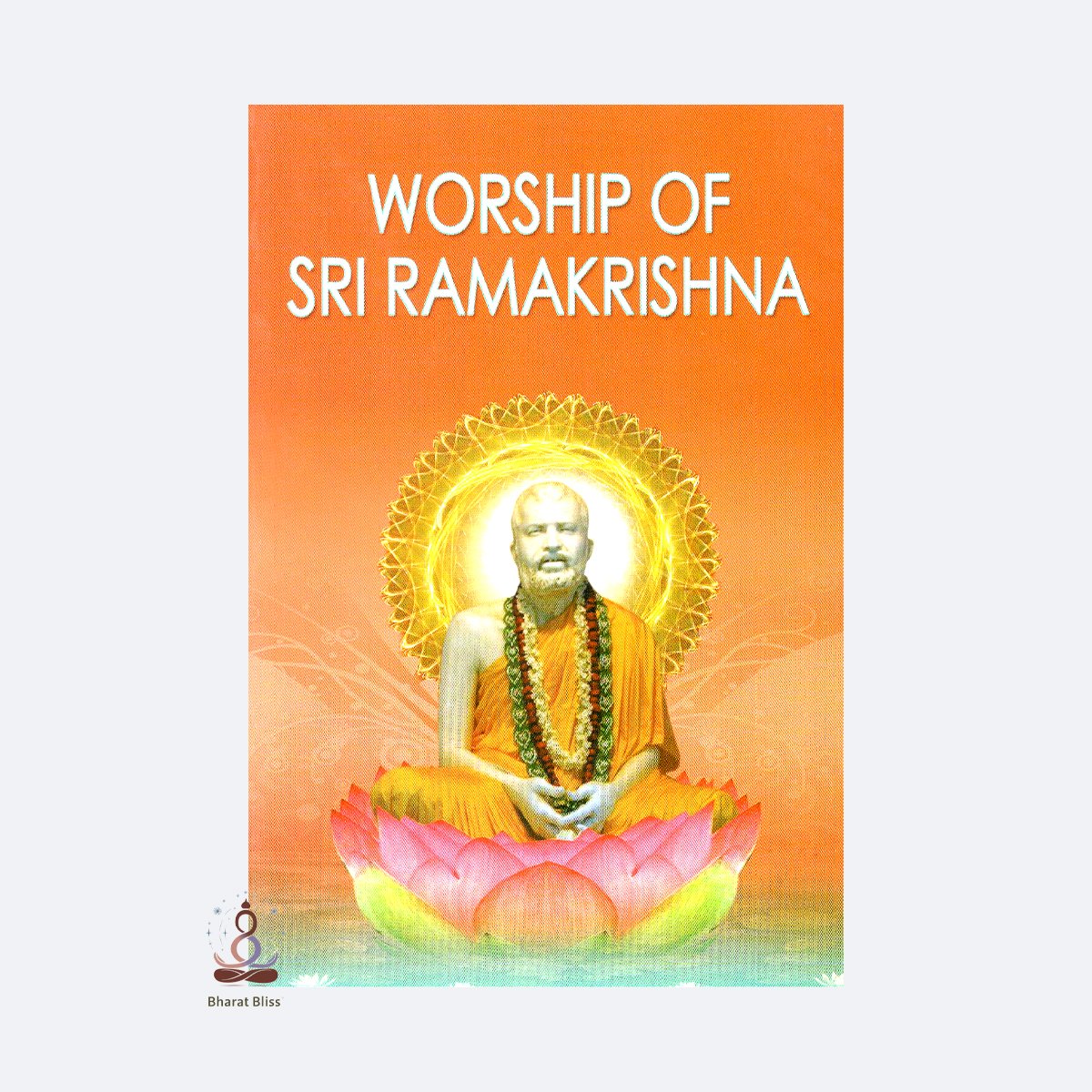Description
The Brahma Sutra, also known as the Vedanta Sutra, is one of the foundational texts of Vedanta philosophy, which itself is one of the six orthodox schools (Shad Darshanas) of Indian philosophy. It was composed by Maharshi Badarayana (also known as Vyasa).
This text systematically compiles and organizes the teachings of the Upanishads, aiming to present the non-dualistic understanding of Brahman (the Supreme Reality) in the form of concise aphorisms (Sutras).
Meaning of the Name:
-
Brahma = the Supreme Reality / Absolute Consciousness
-
Sutra = a brief, profound statement that conveys deep philosophical truth
So, the Brahma Sutra is a set of short, cryptic statements that explain the nature of Brahman and the path to liberation (Moksha).
Structure of the Brahma Sutra:
-
Total Sutras: 555 (as per traditional count)
-
Chapters (Adhyaya): 4
-
Sections per Chapter (Pāda): 4 in each chapter
-
Language: Sanskrit
-
Style: Aphoristic and highly concise – requires commentary (Bhashya) to understand fully
Summary of the Four Chapters:
-
Samanvaya Adhyaya (Chapter of Harmony):
-
Establishes that Brahman is the central theme of the Upanishads
-
Seeks to harmonize the various Upanishadic statements into a consistent worldview
-
-
Avirodha Adhyaya (Chapter of Non-Contradiction):
-
Refutes contradictory philosophical systems (like Sankhya, Nyaya)
-
Proves that Vedantic philosophy is logically sound and non-contradictory
-
-
Sadhana Adhyaya (Chapter of Practice):
-
Describes the means (Sadhana) to attain the knowledge of Brahman
-
Discusses spiritual disciplines, meditation, devotion, and ethical living
-
-
Phala Adhyaya (Chapter of Result):
-
Explains the fruit (Phala) of Brahma-Jnana (knowledge of Brahman)
-
Describes Moksha (liberation) and the unity of the self with Brahman
-
Central Themes:
-
The unity of Atman (individual self) and Brahman (universal self)
-
The cause of creation, sustenance, and dissolution of the universe
-
The path to self-realization through knowledge and meditation
-
The nature of liberation (Moksha) as freedom from the cycle of birth and death
Major Commentaries (Bhashyas):
The Brahma Sutras are cryptic and philosophical in nature, so various schools of Vedanta have interpreted them differently through commentaries. The major ones are:
| Commentator | School of Vedanta | Key View |
|---|---|---|
| Adi Shankaracharya | Advaita Vedanta (Non-dualism) | Brahman and Atman are identical |
| Ramanujacharya | Vishishtadvaita (Qualified Non-dualism) | Brahman is one, but souls and matter are its attributes |
| Madhvacharya | Dvaita Vedanta (Dualism) | Brahman, souls, and world are eternally distinct |
| Nimbarkacharya, Vallabhacharya, Chaitanya Mahaprabhu | Other Vedantic variations | Diverse interpretations with devotional emphasis |
Importance of the Brahma Sutra:
-
Acts as the philosophical backbone of Vedanta
-
Brings together scattered teachings of the Upanishads into a systematic philosophy
-
Has shaped the core theology and metaphysics of Hinduism for centuries
-
A vital guide for seekers of truth and liberation
ब्रह्म सूत्र, जिसे वेदांत सूत्र भी कहा जाता है, हिंदू दर्शन के छः दर्शनों में से एक – वेदांत दर्शन – का मूल ग्रंथ है। इसका रचयिता महर्षि बादरायण (या व्यास) माने जाते हैं। यह ग्रंथ वेदों (विशेषकर उपनिषदों) के सिद्धांतों को संक्षिप्त सूत्र रूप में प्रस्तुत करता है।
नाम का अर्थ:
-
ब्रह्म = परम सत्य / परमात्मा
-
सूत्र = संक्षिप्त व गूढ़ वाक्य जो एक बड़े सिद्धांत को सूक्ष्म रूप में प्रकट करता है
-
अर्थात् ब्रह्म से संबंधित ज्ञान को सूत्रों में व्यक्त करने वाला ग्रंथ
ब्रह्म सूत्र की रचना:
-
अध्याय: 4 (अध्याय / अध्यायाः)
-
प्रत्येक अध्याय में चार-चार पाद (भाग) होते हैं
-
भाषा: संस्कृत
चार अध्यायों का सारांश:
-
समन्वय अध्याय (प्रथम अध्याय):
-
उपनिषदों के विभिन्न विचारों का समन्वय करता है
-
यह सिद्ध करता है कि ब्रह्म ही सब कुछ का कारण है
-
-
अविरोध अध्याय (द्वितीय अध्याय):
-
वेदांत के सिद्धांतों का अन्य दर्शनों (सांख्य, न्याय आदि) से विरोध न होना सिद्ध करता है
-
तर्क के आधार पर वेदांत की श्रेष्ठता को दर्शाता है
-
-
साधन अध्याय (तृतीय अध्याय):
-
ब्रह्मज्ञान प्राप्त करने के साधन (उपाय) बताता है
-
भक्ति, ध्यान, योग, और ज्ञान की व्याख्या करता है
-
-
फल अध्याय (चतुर्थ अध्याय):
-
ब्रह्मज्ञान प्राप्ति के फल (उपलब्धि) का वर्णन करता है
-
आत्मा की ब्रह्म में एकता, मोक्ष, और ज्ञान के प्रभाव पर चर्चा
-
मुख्य विषयवस्तु:
-
आत्मा और ब्रह्म की अद्वैतता (एकता)
-
सृष्टि की उत्पत्ति, स्थिति और लय का कारण
-
जीव, ब्रह्म और जगत के बीच संबंध
-
मोक्ष की प्राप्ति का मार्ग













Reviews
There are no reviews yet.